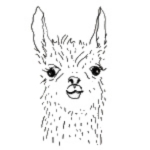About Martina García López
Martina Garcia Lopez is the matriarch of an extensive family including 7 children, all of whom are dedicated to coffee production.
At 62 years old, Martina continues to work her coffee farm with the same intensity and passion as when she was young. She is excited to see how her farm becomes more productive and of better quality year after year.
Martina lives in the community of San Vicente Yogondoy, a lush, densely forested community in the Sierra Sur region of Oaxaca in the district of Pochutla. The steep slopes where coffee grows under a thick canopy of native shade face the Pacific Ocean to the south and receive very distinct rainy and dry seasons with cooling Pacific breezes.
Getting to San Vicente Yogondoy from Oaxaca takes approximately 5 hours via road. That road is in good condition, so the real challenge is getting from the town of Yogondoy out to the farms. Unlike many other producing areas where producers live on their farms, Yogondoy’s producers usually live in the central town and their farms are far away.
Martina’s farm spans 3.5 hectares and is about an hour trek from her house on foot. During harvest, Martina and her family stay in temporary housing on the farms, during which they have to move their coffee by mule over several trips to the closest road access point
Because the farms are so remote and steep, the cherries are often left overnight before processing, leading to extended time between picking and depulping. This offers a de facto extended fermentation before coffees hit the open-air drying stage, which absolutely adds to their complexity.
Martina has her own washing station at her house, down the hill, where she ferments the coffee in wooden tanks for 12 hours, and then dries it for 4 to 5 days on patios.
Martina usually keeps a distance of 2 meters between rows and 1.5 meters between seedlings. Between each row, Martina places a plant that serves to separate the rows and keep the coffee trees apart.
Yogondoy has a high level of plant diversity on the coffee farms compared to other coffee-growing areas. Martina uses native trees such as ice cream bean trees and avocado to shade their coffee trees. These trees provide not only shade, but also various benefits such as food, ornamentation, medicine, construction materials, and water retention.
Yogondoy’s indigenous Zapotec traditions and language are alive and well. In Zapotec, Yogondoy means “River of Bees,” and many local farmers keep beehives for honey and pollination alongside their coffee. Many of the farmers in this group have younger coffee trees that were planted in the last 5 years and continue the tradition of maintaining almost 100% of the Pluma variety, a local mutation of Typica that has grown here for over 80 years. It thrives in these conditions, soil, and climate, producing spectacular cup quality. Many of the farmers are also under 30 years old, an encouraging fact showing that coffee has a future here. However, a percentage of young people are also migrating to the capital in search of better opportunities.
Yogondoy is one of the few communities in which we see a year on year increase in both yield and quality. The producers here have invested a lot in their crops for 8 years, leading to production between 1000-2000 kg per hectare of dry parchment—nearly double that of many other Mexican coffee-growing areas.
Our work in this area started off with a very small group, who, sick of selling their coffee for subpar prices to coyotes and a single cooperative that was dominant at the time, sought a more stable and profitable dynamic. We tried our first samples here almost a decade ago, and since then we’ve built a strong bond with more and more of Yogondoy’s producers, helping them access better prices and more competitive markets. The relationship is built on a foundation of trust and traceability.




